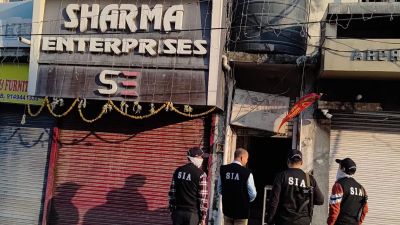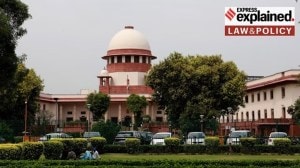Recalling the Graham Staines murder case, with release of convict from jail
Then President of India K R Narayanan said at the time that the killings belonged “to the world's inventory of black deeds”. Here is what to know about the case.
 Graham Staines had moved to India in the 1960s as a missionary associated with the Evangelical Missionary Society of Mayurbhanj. He eventually built a home in the country. (Wikimedia Commons)
Graham Staines had moved to India in the 1960s as a missionary associated with the Evangelical Missionary Society of Mayurbhanj. He eventually built a home in the country. (Wikimedia Commons)A convict in the 1999 murders of Australian missionary Graham Staines and his two minor sons was released from a jail in Keonjhar, Odisha, on Wednesday (April 16) on the grounds of “good behaviour”.
Mahendra Hembram had been convicted with Rabindra Pal Singh, better known as Dara Singh, in the murders. Upon his release, the 51-year-old claimed he was falsely implicated in the case as he was opposing religious conversion and cow slaughter. Singh is currently in jail.
Then President of India K R Narayanan said at the time that the killings belonged “to the world’s inventory of black deeds”. Here is what to know about the case.
Who were the Staines?
Graham Staines had moved to India in the 1960s as a missionary associated with the Evangelical Missionary Society of Mayurbhanj. He worked extensively with leprosy patients in Odisha for over 34 years, a remarkable feat considering the stigma associated with the disease.
He married fellow Australian missionary Gladys in 1983 and they had three children. The couple set up their home in Baripada, Mayurbhanj, to support leprosy patients.
What was the Graham Staines murder case?
In January 1999, the boys Philip (10) and Timothy (6) accompanied their father to meet a congregation of Christians at a jungle camp at Manoharpur in the Keonjhar district. Gladys and their daughter Esther were in Ooty at the time.
On the night of January 22, a mob of around 50 people armed with lathis and weapons led by local Bajrang Dal activist Dara Singh attacked the camp. The mob burned alive Staines and his two minor sons while they slept inside a station wagon at the camp. According to police sources, the attack was linked to tensions over alleged religious conversion.
The ghastly killing drew global outrage and condemnation, with international communities expressing concern about the safety of missionaries in the country. President K R Narayanan condemned the killing and said, “That someone who spent years caring for patients of leprosy, instead of being thanked and appreciated as a role model, should be done to death in this manner is a monumental aberration from the traditions of tolerance and humanity for which India is known”.
After the incident, an FIR was lodged on January 23 at Anandpur police station in Keonjhar under Sections 147, 148, 435, 436, 302 and 149 of the Indian Penal Code (IPC), and Sections 25 and 27 of the Arms Act.
As many as 49 persons were arrested in connection with the killing, but Singh remained at large. The case was taken over by the crime branch of the state police and then transferred to the Central Bureau of Investigation (CBI), which registered a case on March 29, 1999.
The Union government had also ordered a judicial commission of inquiry headed by Supreme Court judge Justice DP Wadhwa to probe the circumstances leading to the incident. The commission submitted its report in June 1999.
Singh was ultimately arrested on January 31, 2000, in a forest in Keonjhar. Sources said he surrendered to the police. Among the 50 persons arrested in connection with the crime between 1999 and 2000, as many as 37 were acquitted within three years.
What did the courts hold?
In September 2003, a Central Bureau of Investigation (CBI) court in Bhubaneswar awarded a death sentence to Singh and life imprisonment to 12 others in the murder case. The Orissa High Court later acquitted 11 others, excluding Mahendra Hembram.
In May 2005, the Orissa HC commuted Singh’s sentence to life imprisonment, a decision upheld by the Supreme Court in January 2011. One more accused, a juvenile at the time of the crime, was tried in a juvenile court. He was subsequently released from custody in 2008.
On March 19, 2025, the Supreme Court asked the Odisha government to decide on the remission plea of Singh, in jail for the past 25 years. In his plea, Singh said that he had spent 24 years in incarceration and “repented” the consequences of his action taken in a fit of “youthful rage”.





- 01
- 02
- 03
- 04
- 05


































